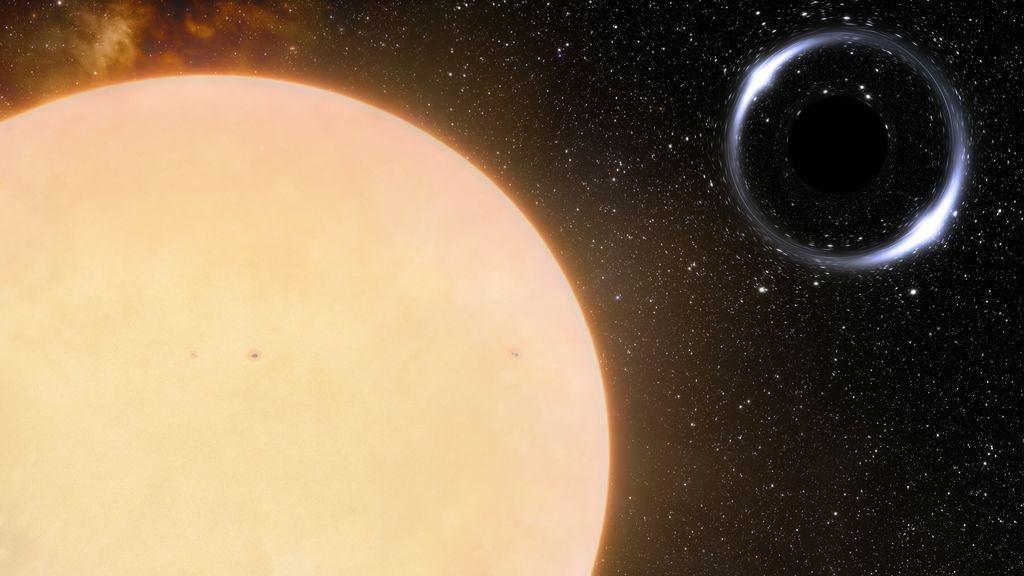
Gemini/NOIRLab/NSF/AURA International Observatory
ONS News••Amended
A new record in the classification of black holes: astronomers have discovered one located “only” 1560 light years from Earth. That’s twice as close as any other known black hole.
Black holes are places in space where nothing, not even light, can escape. Most black holes are remnants of megastar explosions. There are around 100 million in the Milky Way galaxy alone, of which our solar system is a part, but only a handful have been confirmed.
The newly discovered black hole is therefore the closest, 1560 light-years on the scale of our Milky Way (average of 105,000 light-years) to our cosmic backyard. But that’s relative: with current technology, a spacecraft would still take more than 30 million years fly there.
The black hole, Gaia BH1, was found with the Gemini Observatory, an observatory consisting of two large reflecting telescopes, one in Hawaii and the other in Chile. The dark celestial body was discovered because it is not alone. Gaia BH1 has a partner: a star as far from the black hole as Earth is from the sun.
And that is special, say the discoverers. “Take our solar system and put a black hole where our sun is, and a star where our Earth is, and you get this system,” says astrophysicist Kareem El-Badry. From the movement of the star, the astronomers were able to deduce that it must revolve around an invisible massive object: a black hole.
a supermassive black hole
There have been claims by astronomers who thought they had found such a system, but these findings have been repeatedly refuted. El-Badry: “This is the first undisputed observation of a sun-like star orbiting a black hole in our Milky Way galaxy.”
Gaia BH1 is a smaller black hole, a so-called stellar-mass black hole, a stellar black hole. They can have a mass at most a few tens of times greater than that of the sun. Moreover, there is also supermassive black holes, and they can have millions of times more mass than the sun. Such a supermassive black hole, for example, is located at the center of the Milky Way.
Using a network of radio telescopes around the world, astronomers successfully imaged this black hole this year:

EHT cooperation
 DodoFinance Breaking News Made For You!
DodoFinance Breaking News Made For You!
